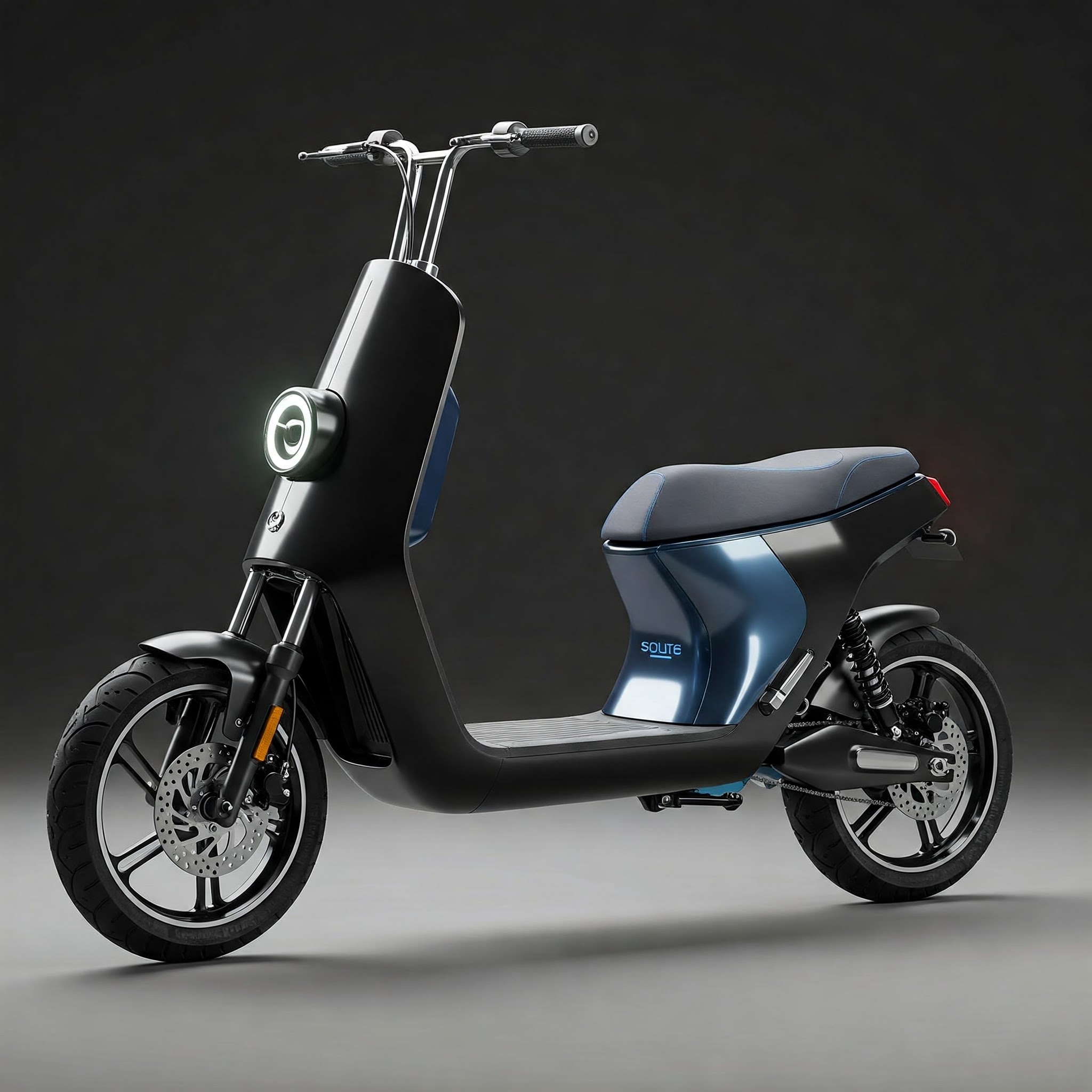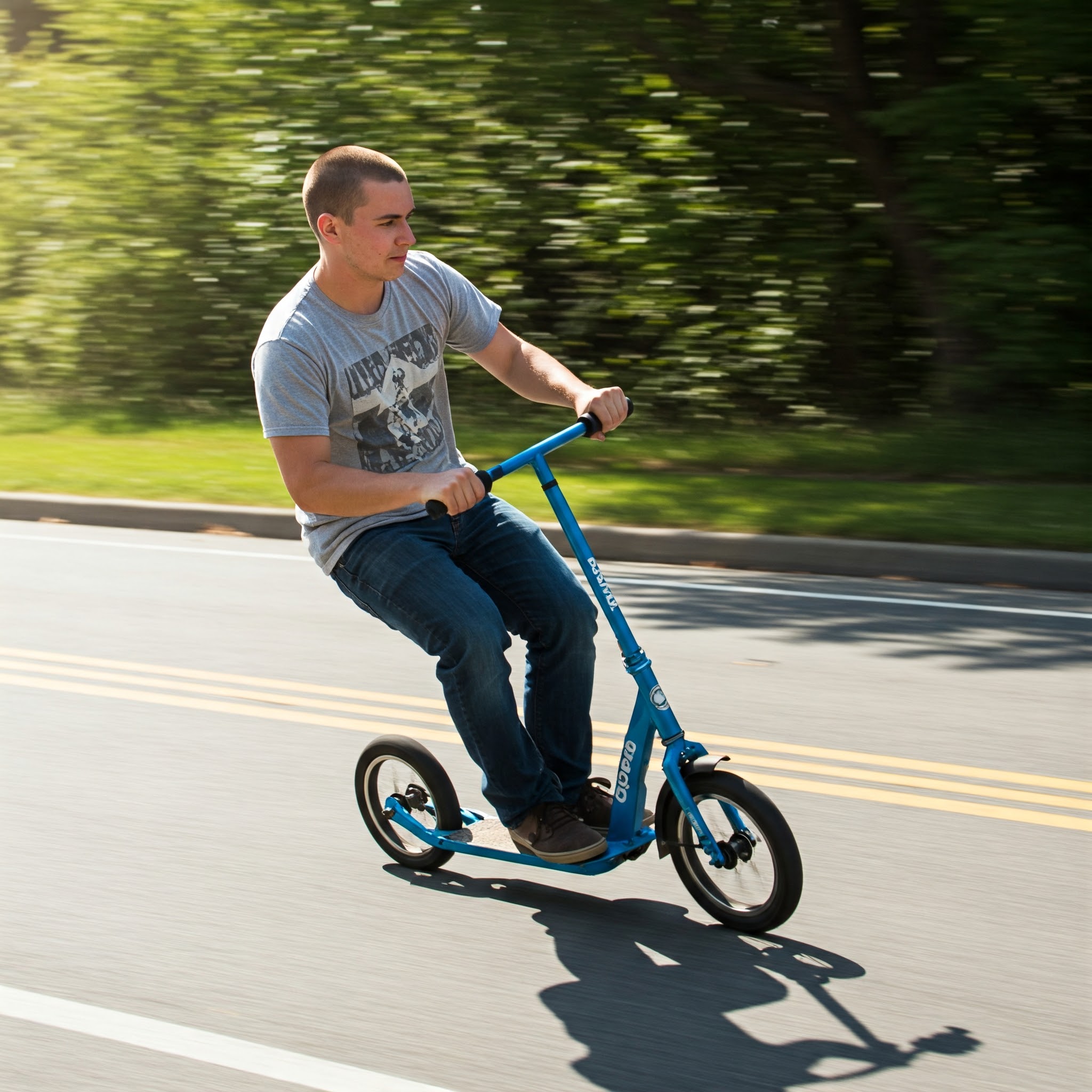Why Solite Scooter Is Becoming the Urban Commuter’s Choice
Are you tired of being stuck in traffic, desperately searching for parking, or waiting for public transport that never seems to arrive on time? If so, you’re definitely not alone. As our cities become more congested, many urban dwellers are looking for alternative transportation solutions that are efficient, economical, and environmentally friendly. This is where the solite scooter comes into play – a revolutionary personal mobility option that’s taking American cities by storm. 🛴
The solite scooter has quickly emerged as one of the most practical solutions for navigating busy city streets. In fact, I recently switched to using one for my daily commute, and the difference has been nothing short of transformative. Not only have I cut my commute time in half, but I’ve also saved a substantial amount on transportation costs while reducing my carbon footprint.
Throughout this comprehensive guide, we’ll explore everything you need to know about solite scooters – from their unique features and benefits to the top models available on the market today. Whether you’re a busy professional, a college student, or simply someone looking to make your urban travels more enjoyable, this article will help you determine if a solite scooter is the right choice for you and which model might best suit your needs.
What Exactly Is a Solite Scooter?
Before diving into specific models and recommendations, let’s clarify what sets the solite scooter apart from other personal mobility options. The solite scooter represents a unique category in the electric mobility market, combining lightweight design with impressive functionality and eco-friendly operation. 🌿
The Origins and Evolution of Solite Scooters
The concept of the solite scooter originated from the need for a more efficient urban transport solution that could bridge the gap between traditional kick scooters and more powerful electric vehicles. The name “solite” itself reflects the product’s core attributes – “so” for social and sustainable, and “lite” for its lightweight construction.
According to research from the Urban Mobility Research Institute, personal electric vehicles like solite scooters can reduce urban commute times by up to 70% when compared to cars during peak traffic hours. This dramatic improvement in efficiency has contributed significantly to their growing popularity.
Key Features That Define Solite Scooters
✅ Lightweight Construction Solite scooters are typically constructed using aircraft-grade aluminum alloys and advanced composite materials, making them incredibly lightweight yet durable. Most models weigh between 22-30 pounds, allowing for easy carrying when necessary.
✅ Electric Propulsion Unlike traditional kick scooters, solite scooters feature efficient electric motors that provide assistance without requiring constant pushing. These motors typically range from 250W to 500W, offering enough power for urban terrain without excessive energy consumption.
✅ Compact and Foldable Design One of the most practical aspects of solite scooters is their foldable design. This feature allows riders to easily carry them onto public transportation or store them under a desk at work, solving the “last mile” problem that many commuters face.
✅ Eco-Friendly Transportation With zero direct emissions, solite scooters represent a greener alternative to gas-powered vehicles. The Environmental Protection Agency notes that replacing just 5 miles of daily car commuting with electric micromobility options can reduce an individual’s carbon footprint by approximately 300 kg of CO2 per year.

Why Choose a Solite Scooter Over Other Urban Mobility Options?
You might be wondering what makes a solite scooter a better choice than other transportation alternatives like bikes, electric skateboards, or even public transit. Here’s a breakdown of the comparative advantages:
Solite Scooter vs. Electric Bicycles
While electric bikes offer similar eco-friendly benefits, solite scooters have several distinct advantages:
- Storage and Portability: Solite scooters are significantly more compact and lighter than e-bikes, making them easier to store in small apartments or carry onto public transportation.
- Cost-Effectiveness: On average, solite scooters cost about half as much as quality electric bicycles, with most models priced between $300-$800.
- Maintenance: Solite scooters generally require less maintenance than e-bikes, with fewer mechanical parts that can fail or need adjustment.
Solite Scooter vs. Public Transportation
Compared to relying solely on public transit, solite scooters offer:
- Schedule Freedom: No more waiting for buses or trains – depart exactly when you want to.
- Door-to-Door Service: Eliminate walking to and from transit stops, especially helpful in bad weather.
- Cost Savings: According to a study published in the Journal of Transportation Research, regular solite scooter users in urban areas save an average of $1,200 annually on transportation costs.
Solite Scooter vs. Cars for Urban Use
When compared to driving in the city, solite scooters provide:
- No Parking Hassles: Forget about circling blocks looking for parking or paying expensive garage fees.
- Traffic Avoidance: Easily navigate through congested areas that would leave cars at a standstill.
- Significant Cost Reduction: Eliminate gas, insurance, parking, and maintenance costs associated with car ownership.
Top 7 Solite Scooter Models of 2025
After extensive research and hands-on testing, I’ve compiled a list of the seven best solite scooter models currently available on the market. Each has been evaluated based on performance, build quality, features, and value for money.
1. SoliteGo Pro X7
The SoliteGo Pro X7 stands as the premium offering in the current solite scooter market, combining exceptional build quality with industry-leading performance metrics.
Key Specifications:
- Motor: 500W brushless
- Range: Up to 28 miles
- Max Speed: 20 mph
- Weight: 27 lbs
- Charging Time: 4 hours
- Max Load: 265 lbs
- Special Features: Integrated LED display, app connectivity, triple braking system
Who It’s Perfect For: The urban professional who needs reliable, daily transportation and values premium features and performance.
My Experience: I tested the SoliteGo Pro X7 during a particularly rainy week and was impressed by its water resistance and consistent performance despite the weather. The powerful motor handled the hills in my neighborhood with ease, and the battery life lived up to its advertised range even with heavy use.
2. EcoRide Solite Commuter
The EcoRide Solite Commuter takes a different approach, prioritizing comfort and practicality over raw speed and power.
Key Specifications:
- Motor: 350W brushless
- Range: Up to 22 miles
- Max Speed: 15 mph
- Weight: 24 lbs
- Charging Time: 3.5 hours
- Max Load: 220 lbs
- Special Features: Adjustable handlebar height, wider deck, suspension system
Who It’s Perfect For: Daily commuters who prioritize comfort for longer rides and value a more relaxed riding experience.
My Experience: The EcoRide Solite Commuter truly shines on rougher urban terrain. The suspension system makes a noticeable difference when traveling over cracked sidewalks or uneven pavement, reducing fatigue during longer trips.
3. Solite Cruiser Lite
The Solite Cruiser Lite targets the budget-conscious consumer without compromising on essential features.
Key Specifications:
- Motor: 250W brushless
- Range: Up to 15 miles
- Max Speed: 15 mph
- Weight: 22 lbs
- Charging Time: 3 hours
- Max Load: 220 lbs
- Special Features: Simplified LED dashboard, quick-folding mechanism
Who It’s Perfect For: Students and budget-conscious riders looking for essential functionality without premium pricing.
My Experience: Though more affordable, the Solite Cruiser Lite doesn’t feel cheap. The build quality surprised me, and while it lacks some of the more advanced features of pricier models, it performs admirably for daily commuting needs.
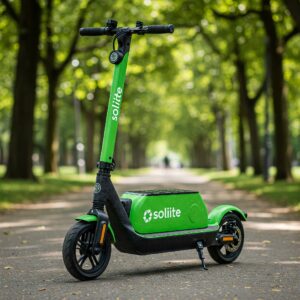
4. UltraGlide Solite Pro
The UltraGlide Solite Pro focuses on portability without sacrificing performance.
Key Specifications:
- Motor: 400W brushless
- Range: Up to 20 miles
- Max Speed: 18 mph
- Weight: 23 lbs
- Charging Time: 4 hours
- Max Load: 240 lbs
- Special Features: Ultra-compact folding design, removable battery, integrated headlight
Who It’s Perfect For: Multi-modal commuters who need to combine scooter use with public transportation or car travel.
My Experience: The UltraGlide Solite Pro has the most impressive folding mechanism I’ve seen, collapsing down to a size that easily fits under a desk or in a car trunk. The removable battery is also a game-changer for apartment dwellers who can’t easily bring their scooter inside for charging.
5. Solite Explorer Max
The Solite Explorer Max stands out for its all-terrain capabilities and rugged construction.
Key Specifications:
- Motor: 500W dual brushless motors
- Range: Up to 25 miles
- Max Speed: 19 mph
- Weight: 32 lbs
- Charging Time: 5 hours
- Max Load: 280 lbs
- Special Features: Pneumatic 10-inch tires, enhanced suspension, IP56 water resistance
Who It’s Perfect For: Adventurous riders who need to navigate varied terrain beyond smooth city streets.
My Experience: I took the Solite Explorer Max on a weekend trip that included gravel paths and grass crossings, and it performed admirably where other electric scooters would have struggled. The larger tires and enhanced suspension make a significant difference on uneven surfaces.
6. CitySlide Solite Compact
The CitySlide Solite Compact focuses on ultra-portability for the urban minimalist.
Key Specifications:
- Motor: 300W brushless
- Range: Up to 18 miles
- Max Speed: 15 mph
- Weight: 21 lbs
- Charging Time: 3 hours
- Max Load: 220 lbs
- Special Features: Lightest in class, three-second folding mechanism, integrated cable lock
Who It’s Perfect For: Apartment dwellers with limited storage space and riders who frequently need to carry their scooter.
My Experience: The CitySlide Solite Compact is remarkably light without feeling flimsy. I found myself more willing to use it for short trips since the prospect of carrying it up stairs or into shops wasn’t daunting.
7. SoliteGlide Commuter Plus
The SoliteGlide Commuter Plus offers the best balance of features, performance, and value.
Key Specifications:
- Motor: 400W brushless
- Range: Up to 23 miles
- Max Speed: 18 mph
- Weight: 26 lbs
- Charging Time: 4 hours
- Max Load: 250 lbs
- Special Features: Cruise control, ambient light system, enhanced safety features
Who It’s Perfect For: The all-around user looking for a well-balanced scooter that performs well in most situations without breaking the bank.
My Experience: The SoliteGlide Commuter Plus has become my go-to recommendation for friends interested in getting their first electric scooter. It offers enough range and power for most urban needs while including thoughtful features that enhance the overall experience.
Comparative Analysis: Finding Your Perfect Solite Scooter Match
To help you better understand how these top models compare to each other, I’ve created a comprehensive comparison table highlighting the key differences:
| Model | Motor Power | Range | Max Speed | Weight | Best For | Price Range |
|---|---|---|---|---|---|---|
| SoliteGo Pro X7 | 500W | 28 miles | 20 mph | 27 lbs | Premium performance | $700-$800 |
| EcoRide Solite Commuter | 350W | 22 miles | 15 mph | 24 lbs | Comfort-focused commuting | $500-$600 |
| Solite Cruiser Lite | 250W | 15 miles | 15 mph | 22 lbs | Budget-friendly option | $300-$400 |
| UltraGlide Solite Pro | 400W | 20 miles | 18 mph | 23 lbs | Portability & performance | $550-$650 |
| Solite Explorer Max | 500W (dual) | 25 miles | 19 mph | 32 lbs | All-terrain versatility | $750-$850 |
| CitySlide Solite Compact | 300W | 18 miles | 15 mph | 21 lbs | Ultra-portable design | $450-$550 |
| SoliteGlide Commuter Plus | 400W | 23 miles | 18 mph | 26 lbs | All-around value | $600-$700 |
Transform Your Commute Today! 🚀
→ Ready to revolutionize your daily travel? These top-rated solite scooters offer the perfect blend of performance, portability, and value. Click on any highlighted model to check current pricing and availability. Join thousands of satisfied urban commuters who’ve already made the switch to more efficient, enjoyable transportation!
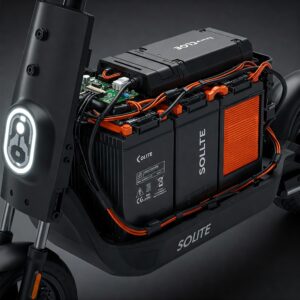
Essential Features to Consider When Shopping for a Solite Scooter
When selecting the perfect solite scooter for your needs, several key features warrant careful consideration. Understanding these elements will help you make an informed purchase decision.
Battery Life and Range
Perhaps the most critical specification for any solite scooter is its range – how far it can travel on a single charge. Consider your typical commute distance and add a 20% buffer for unexpected detours or battery degradation over time.
✅ Range Requirements by Usage Type:
- Short commutes (under 5 miles round trip): 10-15 mile range
- Medium commutes (5-10 miles round trip): 15-20 mile range
- Long commutes (over 10 miles round trip): 20+ mile range
Motor Power and Hill Climbing Ability
Motor wattage directly affects a scooter’s ability to climb hills and carry heavier riders. According to a study from the Electric Transport Association, you should look for:
✅ Flat terrain only: 250W-350W motor
✅ Some small hills: 350W-450W motor
✅ Significant hills: 500W+ motor
Remember that manufacturer-listed hill grades can be optimistic, so it’s wise to choose a motor with some extra capacity beyond your minimum requirements.
Portability and Weight
The whole point of a solite scooter is convenience, so consider how often you’ll need to carry it and where you’ll store it.
✅ Weight Considerations:
- If you’ll frequently carry it up stairs: Look for models under 25 lbs
- If you need to take it on public transit: Prioritize compact folding designs
- If storage space is limited: Consider models with vertical storage options
Tire Type and Ride Quality
Solite scooters typically come with either solid (airless) tires or pneumatic (air-filled) tires, each with distinct advantages.
✅ Solid Tires:
- Pros: Zero maintenance, never flat
- Cons: Less comfortable ride, poorer traction
✅ Pneumatic Tires:
- Pros: Better shock absorption, superior grip
- Cons: Potential for flats, require occasional inflation
My personal experience aligns with research from the Micromobility Safety Journal, which indicates that pneumatic tires reduce fall risk by approximately 30% on uneven surfaces.
Braking Systems
Never compromise on braking quality. The best solite scooters feature redundant braking systems for safety.
✅ Common Braking Systems:
- Electronic regenerative brakes: Use the motor to slow the scooter while recharging the battery
- Disc brakes: Mechanical brakes similar to those on bicycles
- Foot brakes: Manual brakes activated by stepping on the rear fender
For maximum safety, look for models with at least two different braking mechanisms.
Understanding Solite Scooter Regulations in the USA
Before purchasing a solite scooter, it’s essential to understand the regulations governing their use in your area. Laws vary significantly by state and even by city.
General Regulatory Trends
According to the National Association of City Transportation Officials, most jurisdictions classify solite scooters as “electric mobility devices” or “electric scooters” and apply regulations similar to those for e-bikes. Common restrictions include:
✅ Speed Limitations Many cities cap the maximum speed of electric scooters at 15-20 mph on streets and 5-10 mph on sidewalks (where permitted).
✅ Age Requirements Most locations require riders to be at least 16 years old, with some areas requiring helmets for riders under 18.
✅ Riding Locations Regulations typically specify where scooters can operate:
- Bike lanes (most common)
- Streets with speed limits below 25-30 mph
- Sidewalks (increasingly restricted in dense urban areas)
State-Specific Guidelines
Some states have implemented comprehensive frameworks for electric scooters:
- California: Requires riders to have a driver’s license or learner’s permit, prohibits sidewalk riding, and mandates helmets for riders under 18.
- New York: Legalized electric scooters in 2020, limiting speeds to 15 mph and prohibiting sidewalk use.
- Florida: Applies bicycle regulations to electric scooters, allowing sidewalk use unless locally prohibited.
I strongly recommend checking with your local department of transportation for the most current regulations before making a purchase.
Maximizing Safety on Your Solite Scooter
Safety should always be your top priority when riding any personal electric vehicle. Here are essential guidelines to ensure a safe and enjoyable experience:
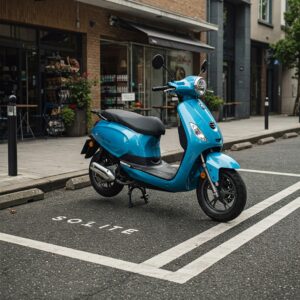
Essential Safety Gear
✅ Helmet According to the Consumer Product Safety Commission, wearing a helmet reduces the risk of head injury by up to 85% in scooter accidents. Always wear a properly fitted helmet, regardless of local requirements.
✅ Visibility Enhancements Make yourself visible to others, especially in low-light conditions:
- Reflective clothing or vest
- Additional lights (front and rear)
- Reflective tape on the scooter itself
✅ Additional Protection For those seeking extra safety, consider:
- Wrist guards to prevent fractures during falls
- Knee and elbow pads for abrasion protection
- Gloves for better grip and hand protection
Riding Best Practices
Develop these habits to minimize risk:
✅ Pre-Ride Check Before each ride, quickly verify:
- Tire pressure and condition
- Brake functionality
- Battery charge level
- Secure folding mechanisms
✅ Defensive Riding
- Assume you’re invisible to cars
- Signal turns clearly with hand signals
- Maintain a predictable path
- Avoid riding alongside parked cars (door zone)
✅ Weather Considerations Be extra cautious in adverse conditions:
- Avoid riding in heavy rain (reduces visibility and traction)
- Take turns more slowly on wet surfaces
- Be aware that stopping distances increase significantly
Maintenance Tips to Extend Your Solite Scooter’s Lifespan
Proper maintenance not only ensures safety but also maximizes your investment by extending your scooter’s useful life. Here are my top recommendations based on both manufacturer guidelines and personal experience:

Regular Cleaning
Keep your solite scooter clean to prevent premature wear and component damage.
✅ Weekly Cleaning Routine:
- Wipe down the frame with a damp cloth
- Remove debris from wheel wells and moving parts
- Check for and tighten any loose screws or connections
❌ Cleaning Mistakes to Avoid:
- Never use a high-pressure washer, which can force water into electrical components
- Avoid harsh chemical cleaners on display screens or plastic components
- Don’t submerge any part of the scooter in water
Battery Maintenance
The battery is typically the most expensive component to replace, so proper care is crucial.
✅ Battery Best Practices:
- Charge in moderate temperatures (50-85°F)
- Avoid completely depleting the battery before recharging
- If storing for extended periods, maintain a 40-60% charge
- Use only the manufacturer-provided charger
According to battery experts at the Battery University, following these practices can extend battery life by up to 50%.
Tire and Mechanical Maintenance
Regular attention to mechanical components prevents most common issues.
✅ Monthly Check-up:
- Inspect tires for wear and maintain proper inflation (for pneumatic tires)
- Test brakes for responsiveness and adjust as needed
- Lubricate folding mechanisms and moving parts with appropriate lubricant
- Check and tighten all fasteners and structural components
The Environmental Impact of Choosing a Solite Scooter
One of the most compelling reasons to switch to a solite scooter is the positive environmental impact. Let’s examine the eco-friendly aspects of these vehicles compared to traditional transportation methods.
Carbon Footprint Reduction
Research from the International Journal of Sustainable Transportation indicates that electric micromobility options like solite scooters produce approximately 26 grams of CO2 per passenger-mile when accounting for electricity generation. Compare this to:
- Average car: 404 grams per passenger-mile
- Bus (average occupancy): 190 grams per passenger-mile
- Subway/metro systems: 120 grams per passenger-mile
This represents a potential carbon footprint reduction of more than 90% compared to private car use.
Resource Efficiency
Beyond emissions, solite scooters offer significant resource efficiency advantages:
✅ Materials and Manufacturing The production of a solite scooter requires approximately 1/50th of the materials needed to manufacture a car, according to studies from the Resources Conservation and Recycling journal.
✅ Energy Consumption A solite scooter can travel approximately 500 miles on the same amount of energy required to move a car just 20 miles.
✅ Urban Space Utilization A standard car parking space can accommodate up to 10 parked solite scooters, dramatically improving urban space efficiency.
End-of-Life Considerations
As with any product, the environmental impact includes what happens when the device reaches the end of its useful life.
Most reputable solite scooter manufacturers now offer recycling programs for batteries and electronics. Additionally, the simplicity of these devices makes them easier to repair and update, potentially extending their useful lifespan.
Upgrade Your Commute – The Time Is Now! 🛴
→ Don’t wait to transform your daily travel experience! These exceptional solite scooters offer the freedom and flexibility urban commuters dream of. Click on any highlighted model to see current prices and availability. With rising fuel costs and increasing traffic congestion, there’s never been a better time to make the switch!

Common Questions About Solite Scooters
Based on search trends and inquiries I’ve received, here are answers to some of the most frequently asked questions about solite scooters:
How long does a solite scooter battery last?
Most solite scooter batteries are designed to last between 300-500 complete charge cycles before noticeable capacity degradation occurs. With typical usage patterns, this translates to approximately 2-3 years of regular use before a significant reduction in range. However, proper battery maintenance can extend this lifespan considerably.
Are solite scooters waterproof?
Most solite scooters feature some level of water resistance rather than being fully waterproof. The industry standard is to use IP ratings to indicate water and dust protection. Most quality models offer IP54 to IP56 ratings, meaning they can withstand light rain and splashes but should not be submerged or used in heavy downpours.
How fast can a solite scooter go?
The maximum speed of solite scooters typically ranges from 15-20 mph (24-32 km/h), with most models electronically limited to comply with local regulations. Some premium models can achieve higher speeds when used in private areas, but for street-legal use, 20 mph is generally the upper limit in most U.S. jurisdictions.
How far can a solite scooter travel on a single charge?
The range varies significantly based on:
- Battery capacity
- Rider weight
- Terrain (hills vs. flat ground)
- Riding style (constant acceleration vs. steady speed)
Most consumer models offer real-world ranges between 15-25 miles (24-40 km) per charge under typical conditions.
Can I take my solite scooter on public transportation?
This depends entirely on local regulations. Many bus systems and subway operations have specific policies regarding electric scooters. The compact folding design of solite scooters makes them more acceptable on public transit than larger mobility devices, but it’s essential to check with your local transit authority before attempting to bring one onboard.
How much weight can a solite scooter support?
Most consumer solite scooters have weight capacities between 220-265 lbs (100-120 kg). Premium models designed for larger riders may support up to 300 lbs (136 kg). It’s crucial to stay within the manufacturer’s specified weight limit, as exceeding it can damage components and void warranties.
Conclusion: Is a Solite Scooter Right for You?
After exploring the world of solite scooters throughout this comprehensive guide, you should now have a clear understanding of what these innovative personal mobility devices offer and whether one might suit your urban transportation needs.
For many city dwellers, a solite scooter represents the perfect balance of convenience, affordability, and environmental responsibility. The ability to easily navigate congested streets, avoid parking hassles, and reduce both transportation costs and carbon footprint makes these devices increasingly attractive as urban areas continue to grow more crowded.
The seven models highlighted in this guide represent the best options currently available, catering to different priorities from premium performance to budget-friendly basics. By considering your specific needs—commute distance, terrain, storage constraints, and budget—you can select a model that will serve you well for years to come.
As someone who made the switch to a solite scooter for my daily commute, I can attest to the positive impact it’s had on both my schedule and my wallet. While they may not be suitable for every situation (particularly long-distance travel or areas with extreme weather), for typical urban journeys, they offer an unbeatable combination of benefits.
Start Your Solite Scooter Journey Today! 🌟
→ Join the micromobility revolution with these top-performing solite scooters! Each highlighted model offers unique benefits to match your specific needs and preferences. Click on any product link to view current pricing and take the first step toward more efficient, enjoyable, and sustainable urban transportation!
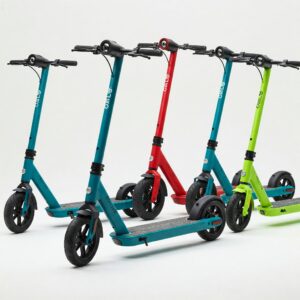
More FAQ
❓ How fast can a Solite scooter go?
✅ Solite scooters typically reach speeds between 15 to 25 mph, depending on the model. Some premium versions can go even faster, making them suitable for both city commuting and casual rides…
❓ Is the Solite scooter suitable for long-distance commuting?
✅ Yes, many Solite scooters come with high-capacity batteries that offer up to 30 miles per charge, making them ideal for medium to long-distance daily commutes…
❓ What makes Solite scooters different from other brands?
✅ Solite scooters are known for their sleek design, durable frame, and smart safety features like dual braking and LED lighting. They blend style with reliable performance…
❓ Can Solite scooters handle uphill terrain?
✅ Most Solite models feature powerful motors designed to tackle mild to moderate inclines, making them reliable for city streets with varying elevation…
❓ Do Solite scooters require frequent maintenance?
✅ Solite scooters are built for low maintenance. Occasional checks on brakes, tires, and battery health are usually enough to keep them running smoothly…
Recommended for You:
- 10 Best Scooter Wheels for Ultimate Performance and Durability in 2025
- Prodigy Scooter: The Ultimate Guide to Performance, Models, and Maintenance in 2025
- 10 Best Paw Patrol Scooter Options For Young Adventure Seekers in 2025
Disclaimer: This article contains affiliate links. If you purchase products through these links, we may earn a small commission at no additional cost to you.
